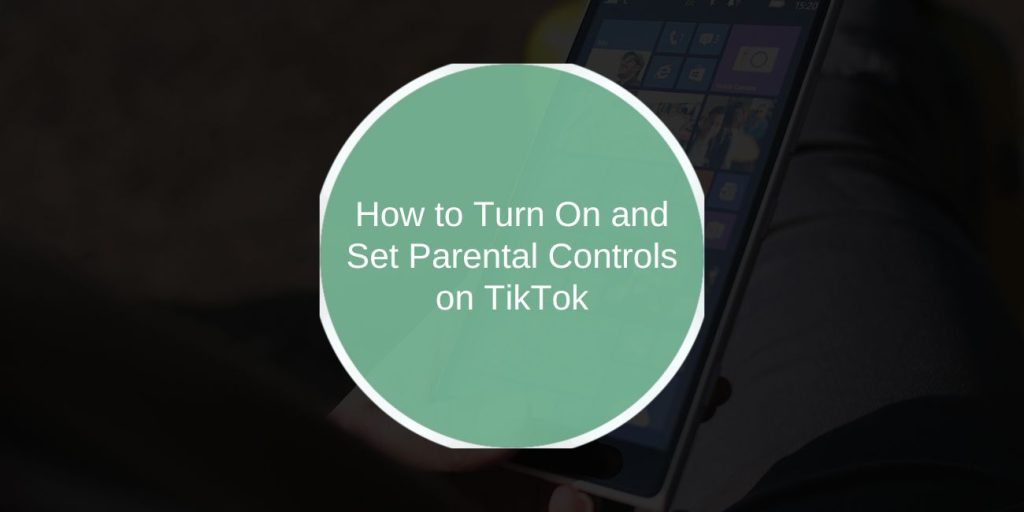TikTok is one of the most popular apps among teens and pre-teens. While it’s full of fun and creative content, it’s also open to all kinds of videos, and not all of them are right for younger viewers. As a parent, you may worry about screen time, mature content, or who your child interacts with on the app.
Thankfully, TikTok offers built-in parental controls that allow you to limit your child’s use of the app. They’re free, fairly simple to use, and offer real ways to guide your child’s experience safely. In this guide, you’ll learn how to turn them on and adjust them to suit your family.
What Are TikTok Parental Controls?
TikTok gives parents tools to help manage what their kids see and how long they use the app. These features include Family Pairing, Screen Time Management, Restricted Mode, and privacy controls for messages and comments.
The idea isn’t to spy—it’s about setting healthy boundaries. With the right setup, your child can still enjoy TikTok, but in a safer and more age-appropriate way.
How to Set Up Family Pairing Mode on TikTok
Family Pairing is TikTok’s primary control center. It allows you to link your TikTok account with your child’s account. Once connected, you can manage settings directly from your device.
To link accounts, open TikTok on your phone and tap Profile. From there, go to Settings and Privacy, scroll down to Family Pairing, and select whether you’re the parent or teen. Scan the QR code from your child’s phone and the two accounts will be paired.
Once you’re linked, you’ll be able to set limits on screen time, manage privacy settings, and even block access to mature content—all without needing to use your child’s device.
Managing Screen Time Limits
TikTok can be addictive. Without limits, kids may spend hours scrolling through their devices. Screen Time Management allows you to set a daily usage cap and secure it with a passcode.
To set screen time controls:
- Open TikTok and tap Profile
- Tap the Menu icon (top right) and choose Settings and Privacy
- Scroll to Digital Wellbeing
- Tap Screen Time Management
- Set a daily time limit (e.g., 60 minutes)
- Create a 4-digit passcode to prevent changes
Once set, your child will see reminders when they hit the limit. It’s a great way to build healthy habits without completely blocking access.
Enabling Restricted Mode to Filter Content
TikTok’s Restricted Mode helps keep mature or inappropriate content off your child’s feed. It’s not perfect, but it does a good job of filtering out most content that isn’t intended for younger viewers.
To turn it on, open the TikTok app and head to Settings and Privacy. Under Digital Wellbeing, tap Restricted Mode. Follow the steps to enable it and lock the setting with a passcode.
This mode can be turned off later, but only with the passcode you set, so your child can’t disable it without your permission.
Control Messages, Comments, and Privacy Settings
TikTok allows direct messaging between users, but you can change who’s allowed to contact your child, or turn off messages completely. You can also control who can comment on videos and see your child’s profile.
Inside the app, go to Settings and Privacy and tap Privacy. Here, you’ll see options to:
- Turn off direct messaging or limit it to friends
- Set the account to Private, so only approved followers can view videos
- Choose who can comment on videos
- Block users or report abusive messages
These settings give you control over who your child can communicate with and who can view their content.
Tips Based on Age and Maturity Level
Not all teens need the same rules. Younger kids may benefit from strict limits and active monitoring. Older teens might be ready for more freedom but still need light boundaries.
Start with stronger settings, then adjust over time based on how your child uses the app and how much you trust them to follow the rules. It’s a good idea to involve them in the process—explain why the settings are in place and what needs to happen to earn more control.
This keeps the focus on trust, not just control.
Final Thoughts
Parental controls on TikTok give you a way to support your child without constantly checking over their shoulder. Tools like Family Pairing, screen time limits, and content filters make a significant difference when used effectively.
Even more important than the settings, though, is the conversation. Discuss with your child what they see online. Explain why some videos might not be okay and why specific rules are in place.
When used together, good tools and open communication help keep TikTok fun—and safe—for everyone.
